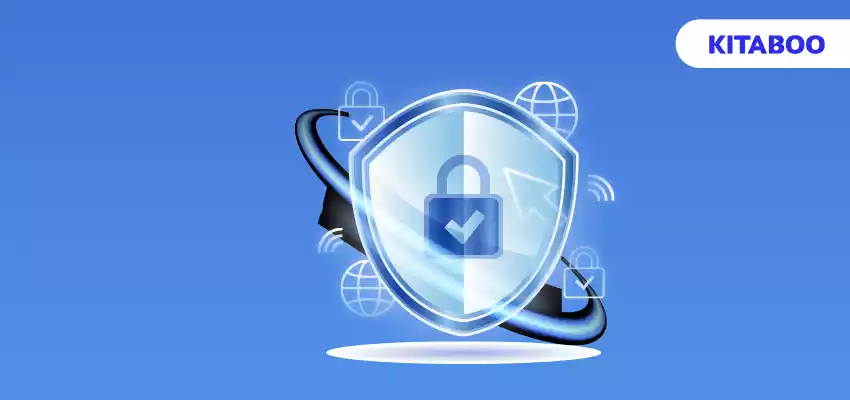
ePUB DRM: Your Guide to Digital Rights Management
Summarize this blog with your favorite AI:
Whether you’re an author or a publisher, safeguarding your intellectual property from copyright breaches and piracy is paramount.
Digital Rights Management, or DRM, is one of the best options available to eBook authors and publishers to protect their files in ePUB and other formats.
DRM technology is generally utilized for a variety of digital products, including software, database subscriptions, ebooks, films, and music, as well as other critical corporate data.
Copyright holders and content creators can both stop unauthorized individuals from editing their work or using it illegally by employing DRM to secure these assets.
Read on as we take you through what exactly ePUB refers to, how it works in practice, and more. Let’s start!
Table of Contents:
III. Benefits of ePUB DRM to Check Out
IV. What Methods Does DRM Use?
V. Wrapping Up
What is ePUB DRM?
ePUB DRM, or Digital Rights Management, is a technology that controls how you can share your eBook in ePUB format. For instance, once you’ve downloaded an eBook from the Kindle, you can’t simply share it across. This is because of the DRM technology that limits its distribution.
Put simply, DRM is like a hidden layer of protection that comes with your ePUB eBook. The technology works by stopping unauthorized users from pirating your work and sharing it freely.
There are several types of DRM available in the market and each of them comes with a unique code to prevent your eBook from being passed from device to device.
KITABOO is a renowned digital textbook platform that comes with advanced DRM capabilities, ensuring that educational content remains secure and protected from unauthorized distribution.
What Does ePUB DRM Do?
ePUB DRM prevents users from copying, sharing and printing their eBooks when they are not authorized to do so. This helps protect the sales and revenues that come in with each sale of an eBook. Put simply, ePUB DRM allows you to regulate how your eBook is used, when, and by whom.
There are several different ways that an ePUB DRM can help protect your eBook file, as discussed below:
- ePUB DRM technology helps restrict the illegal distribution, download, and upload of eBooks, as well as limit access and borrowing of the ePUB.
- Controls the number of devices a person can download the ePUB onto.
- It helps restrict or prevent the copy-paste and sharing functions from being used on an ePUB.
Benefits of ePUB DRM to Check Out
Here are some of the key advantages of ePUB DRM:
1. Enhanced ROI
By implementing ePUB DRM, you can prevent unauthorized access to and reproduction of your content. This means that you can sell your eBooks directly to your audience online, knowing that your work is secure.
ePUB DRM offers significant benefits, particularly in maximizing return on investment (ROI). By implementing ePUB DRM, you gain the ability to prevent unauthorized access to and reproduction of your valuable content. This means that when you sell your eBooks directly to your online audience, you can do so with confidence, knowing that your work is protected from piracy.
2. No Unauthorized Access
DRM technology helps you lower the risk of piracy and unauthorized distribution by limiting access to intellectual property to authorized users only and preventing unauthorized individuals from accessing, copying, or distributing their protected work.
DRM also allows publishers and authors greater control over how the work is distributed. Put simply, it enables the implementation of digital rights, usage restrictions, and licensing agreements, thus ensuring that your original content is distributed and consumed as per your rules.
3. Protects Business Revenue
DRM facilitates cost-effective online content publishing, empowering you to distribute your work efficiently. Once published, you have the flexibility to produce unlimited copies, modify, or withdraw content with minimal overhead expenses.
Additionally, DRM ensures that these digital copies are accessed and utilized only by authorized users, protecting your content from unauthorized distribution and piracy. This control over access not only safeguards your revenue streams but also reinforces the value of your content in the digital marketplace.
4. Serves as a Protective Barrier
DRM serves as a safeguard, preventing users from sharing, printing, and copying ePUB files and safeguarding the money made from each transaction.
The DRM technology, at this place, can safeguard your work using the following methods:
- Through implementing a digital lock to protect private or sensitive data, such as vital papers.
- Furthermore, DRM technology guarantees the safe and unhindered distribution of information.
- Additionally, DRM technology limits (completely or significantly) the ability to copy and paste text, which reduces the amount of content that is stolen or lifted.
What Methods Does DRM Use?
DRM software uses many strategies to ensure that your intellectual property is adequately protected.
Here are some of the methods:
1. Encryption
Encryption involves rendering content unintelligible, requiring a decryption key for access. This method serves as a robust defense, protecting intellectual property and preventing unauthorized access.
2. Access Control
DRM systems are typically designed to control user access based on digital rights as well as licensing agreements associated with the content.
3. Watermarking
Another technique used by DRM is watermarking. It is the procedure that gives intellectual property additional visible or invisible identifiers, making it possible to trace and identify unauthorized copies of the original or copyrighted information.
4. Authentication
DRM systems often utilize authentication mechanisms to verify the identity of users or devices attempting to access protected content. This can involve password authentication, digital signatures, or biometric authentication methods to ensure that only authorized users can access the content.
Wrapping Up
Acquiring DRM, or digital rights management, is an excellent way to help authors and publishers put better security and extra controls over their copyrighted content.
For instance, an ebook protection system with DRM allows authors and publishers to specify details such as how many devices their e-book can be installed on. This significantly helps them manage access to their ebooks in a more flexible way.
Digital textbook platforms like KITABOO come with advanced DRM DRM functionalities, providing comprehensive solutions for content protection and distribution. This way, the platform ensures that your valuable content is safeguarded and distributed securely.
Connect with us now for further details!
Discover how a mobile-first training platform can help your organization.
KITABOO is a cloud-based platform to create, deliver & track mobile-first interactive training content.


![Top 5 Free Publishing Sites for Independent Publishing [2026]](https://kitaboo.com/wp-content/uploads/2025/09/Top-5-Free-Publishing-Sites-for-Independent-Publishing-2026-420x235.webp)
